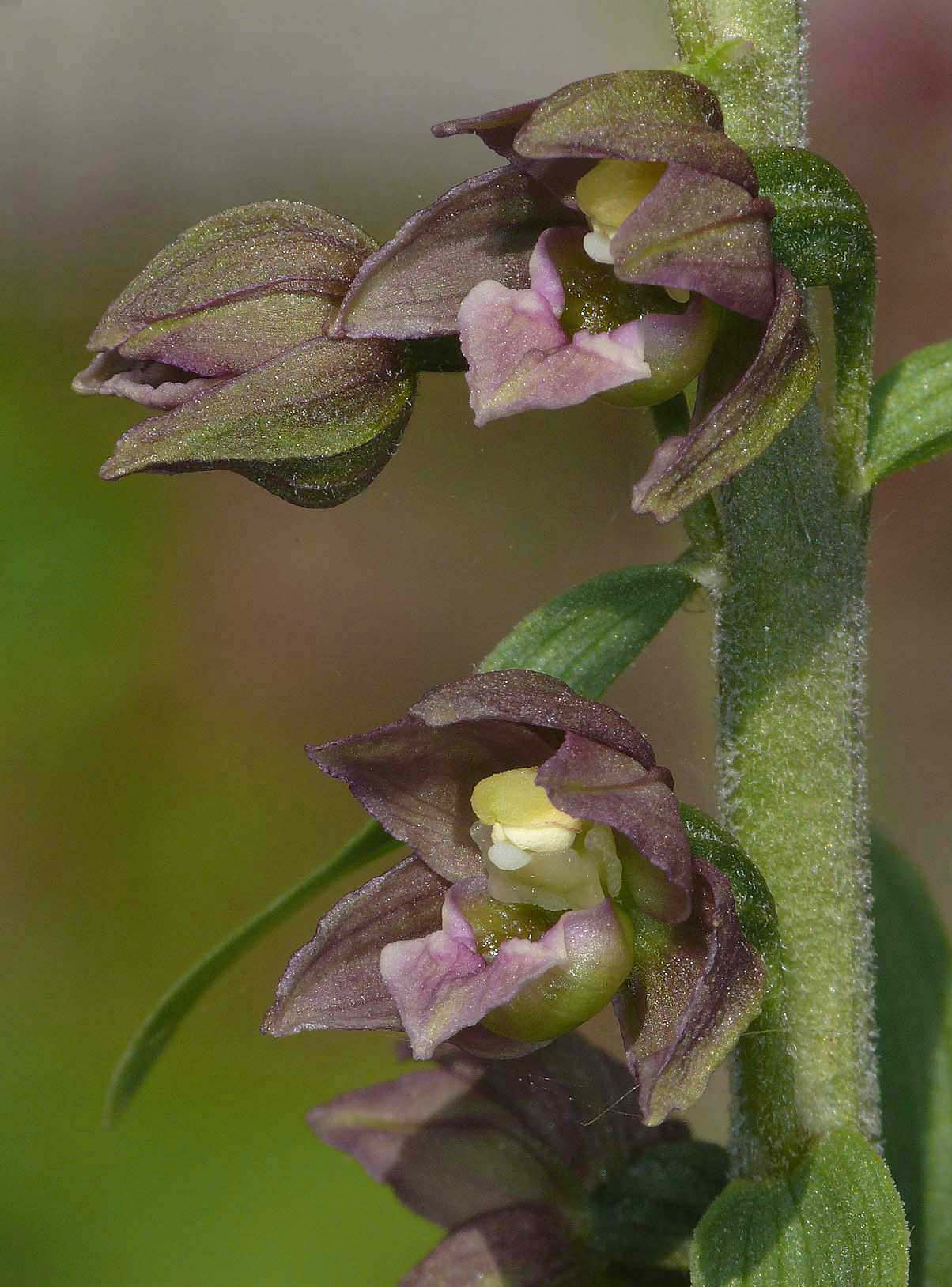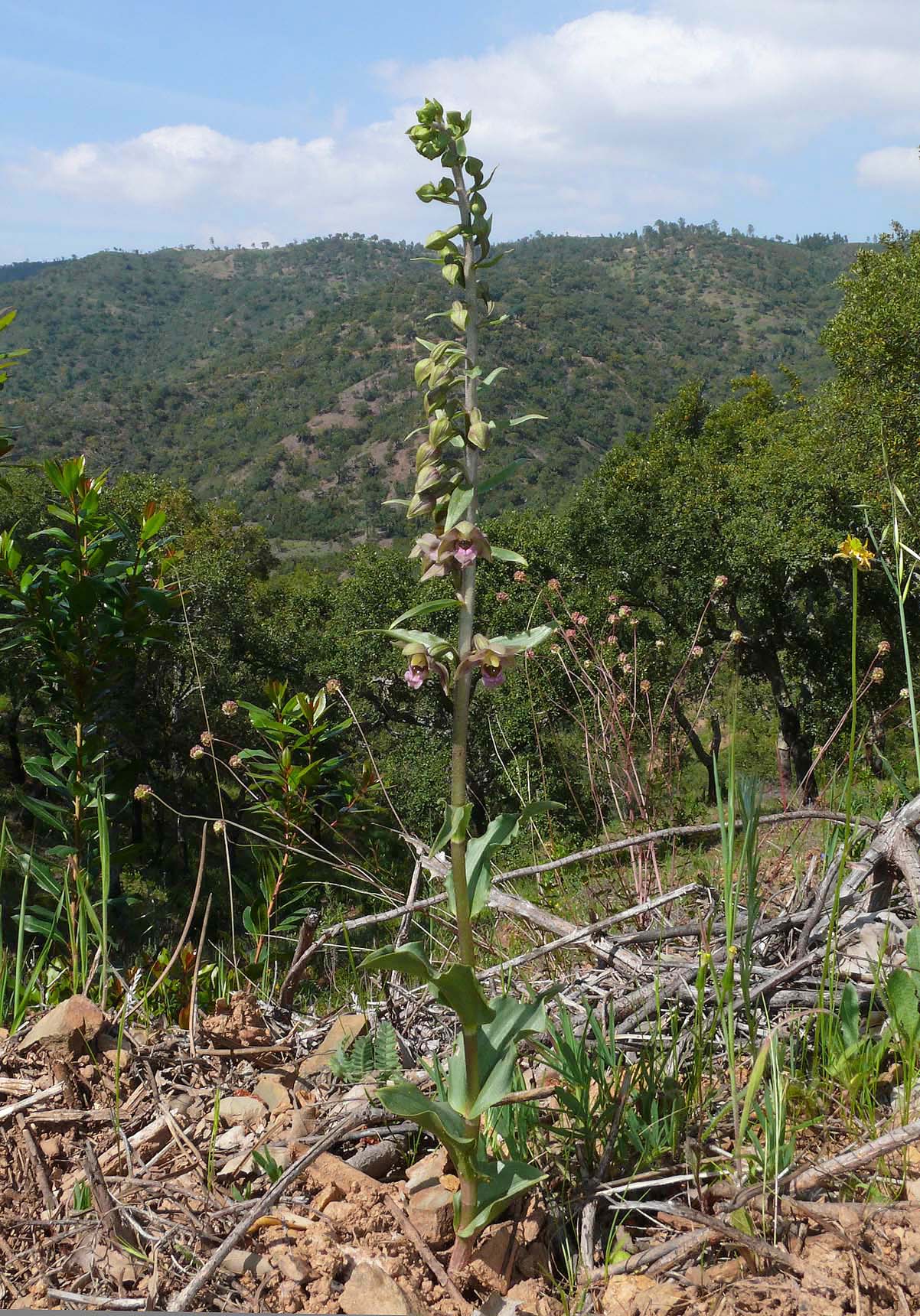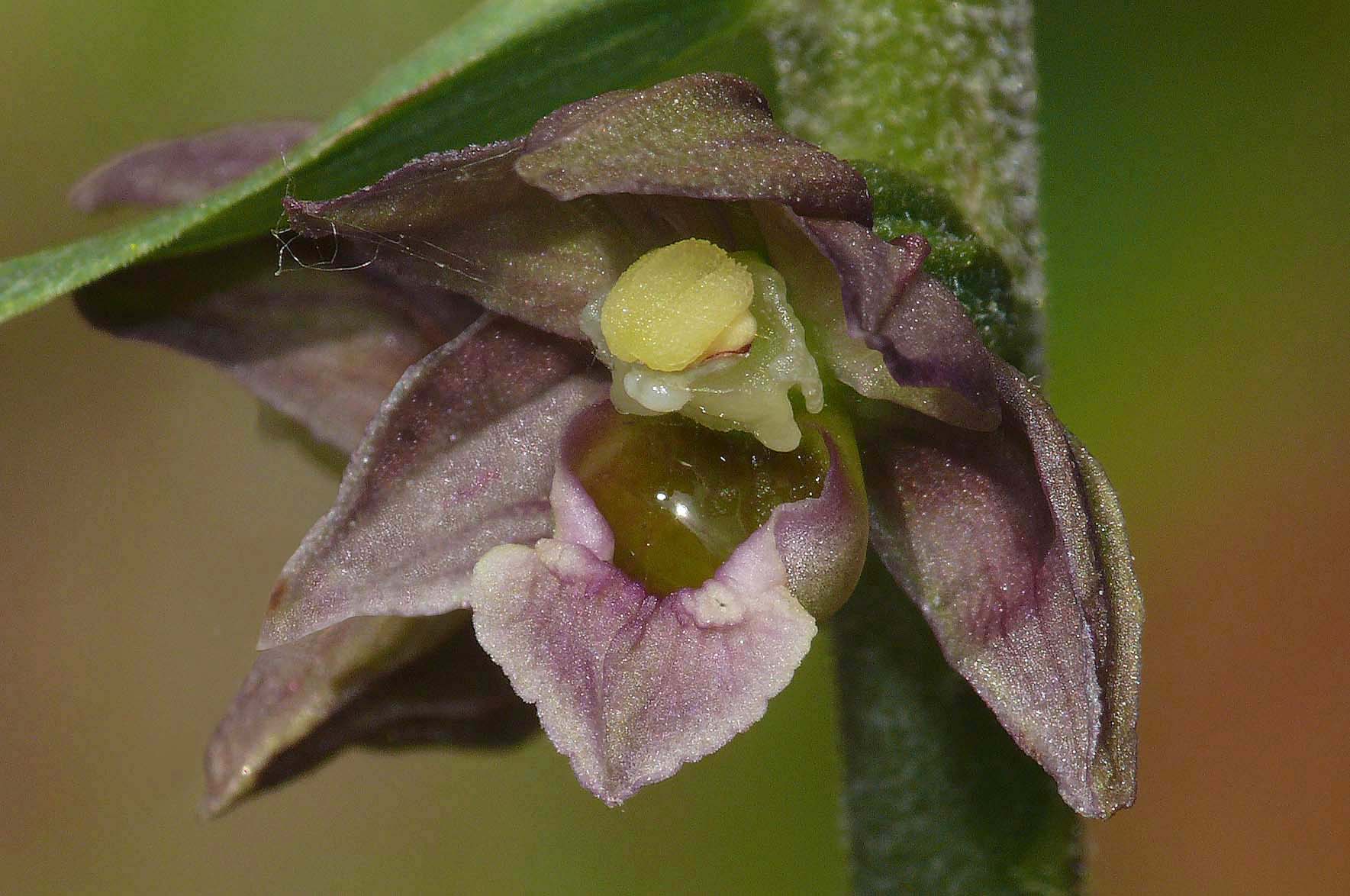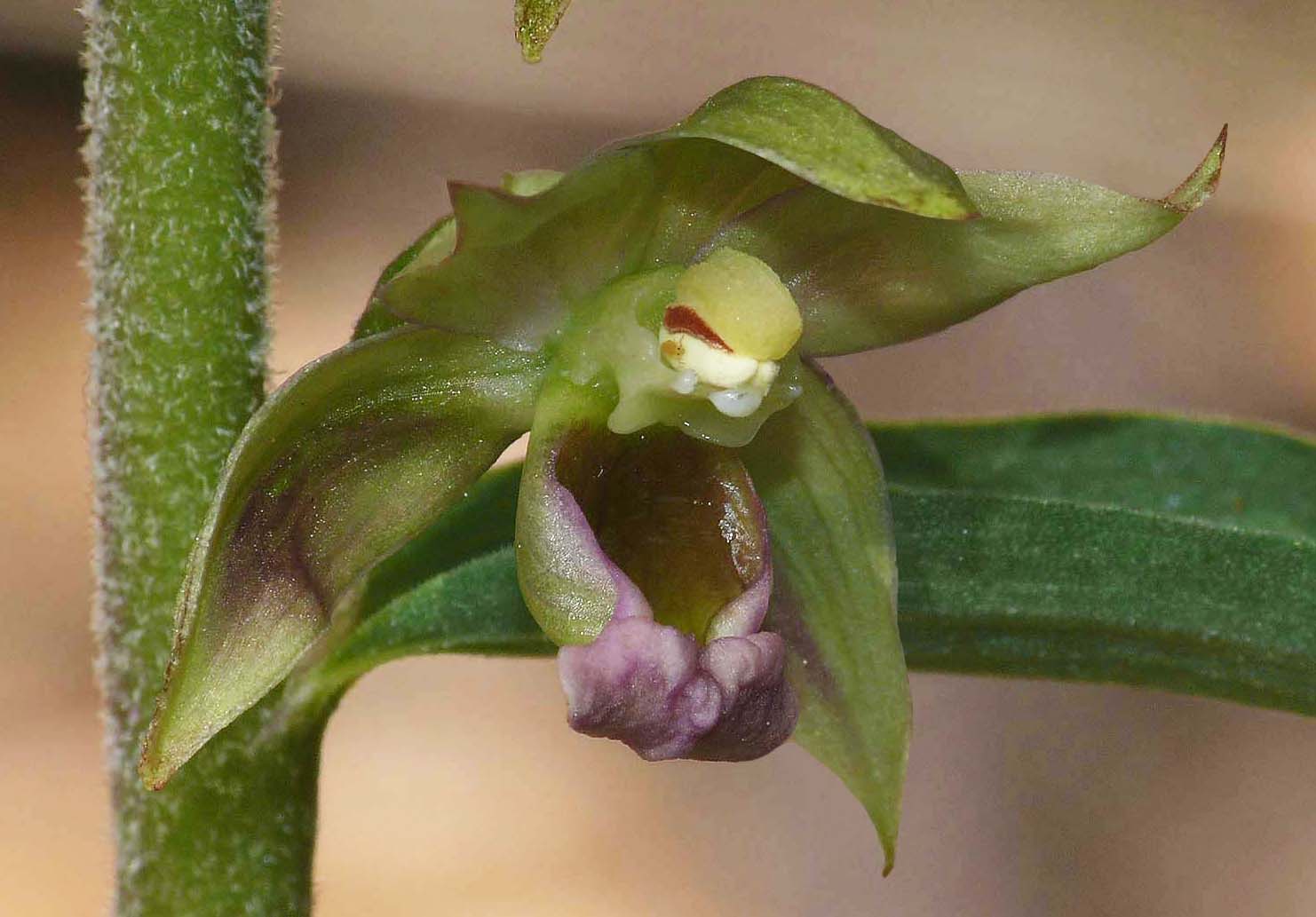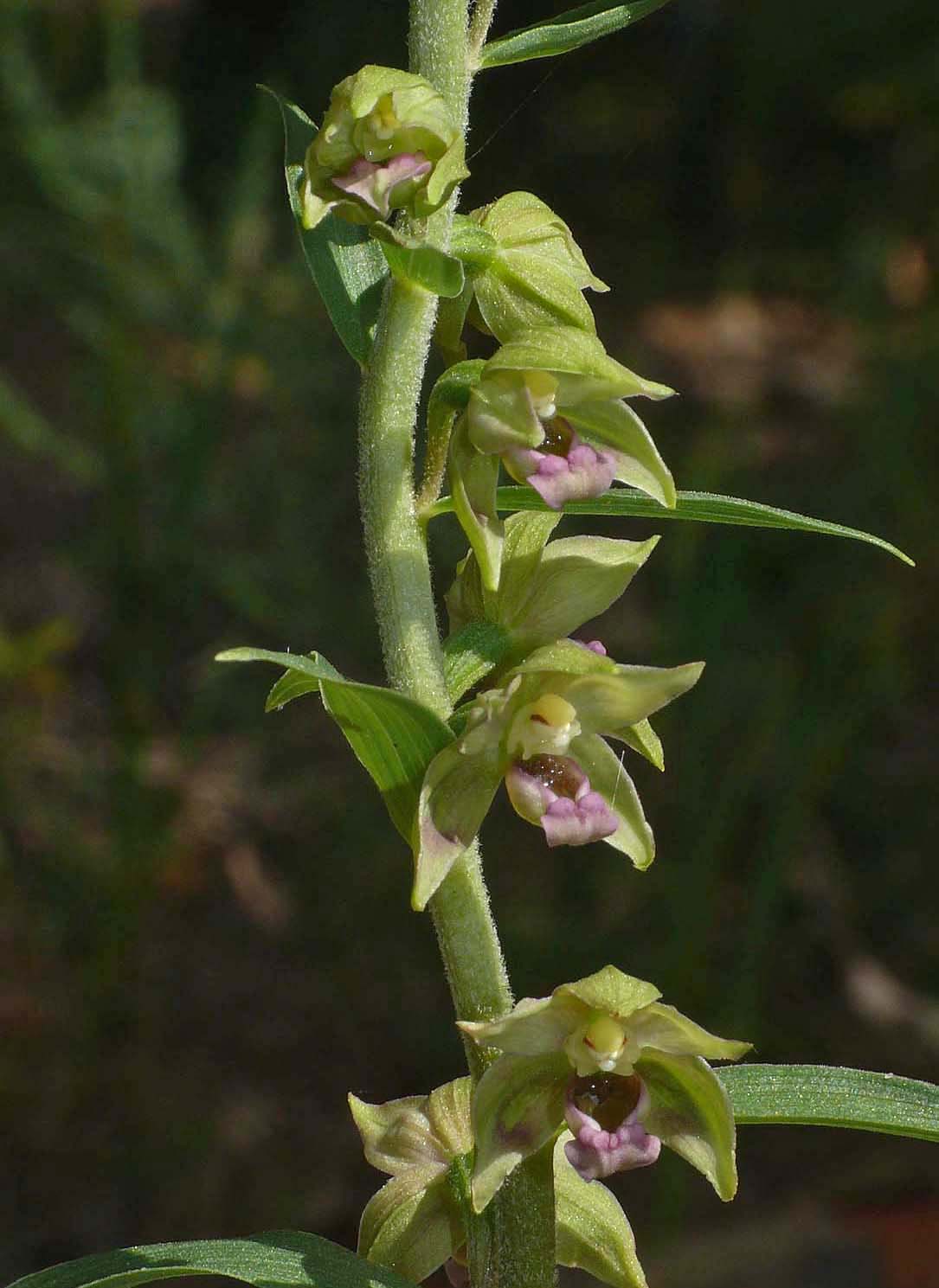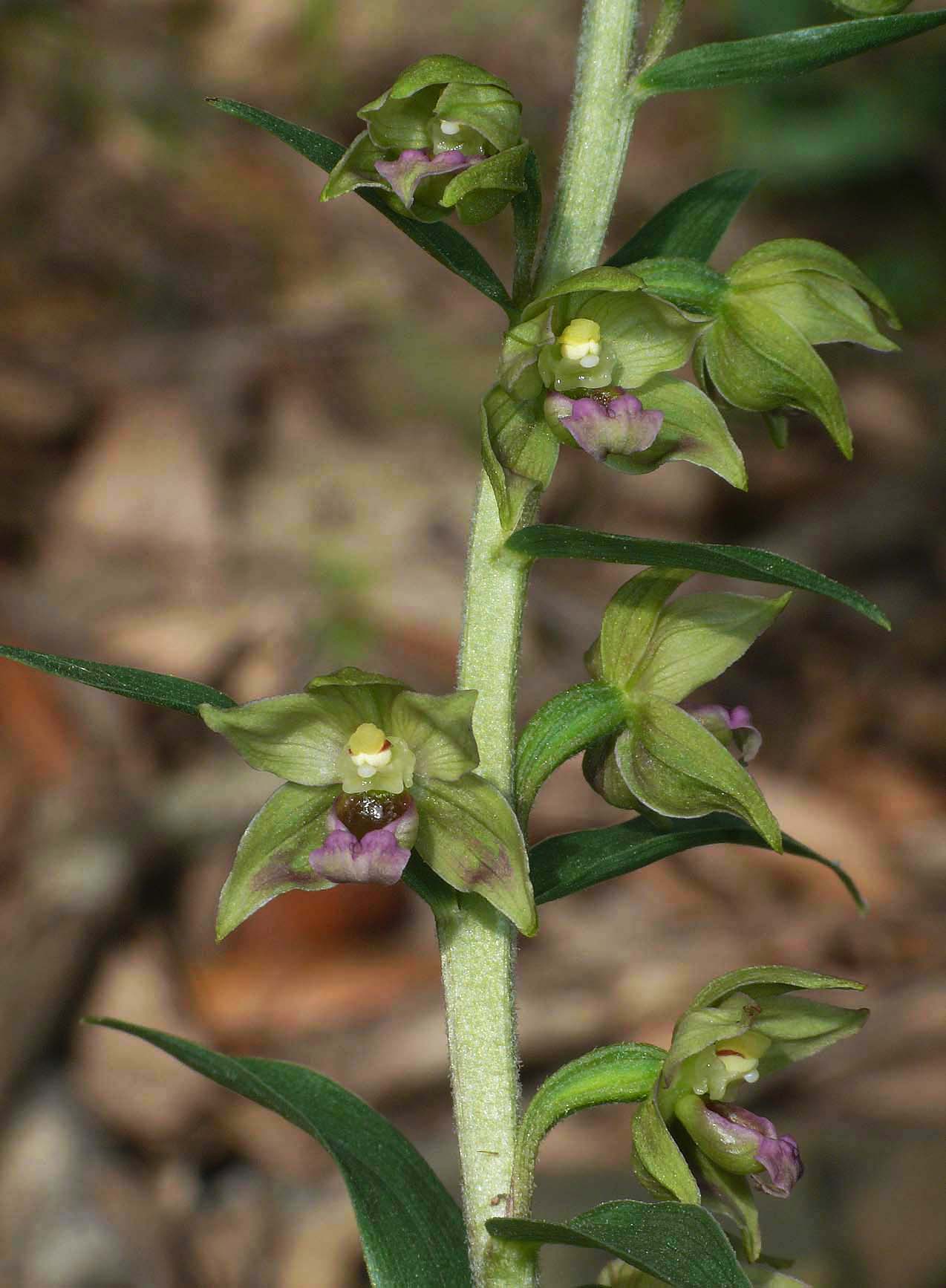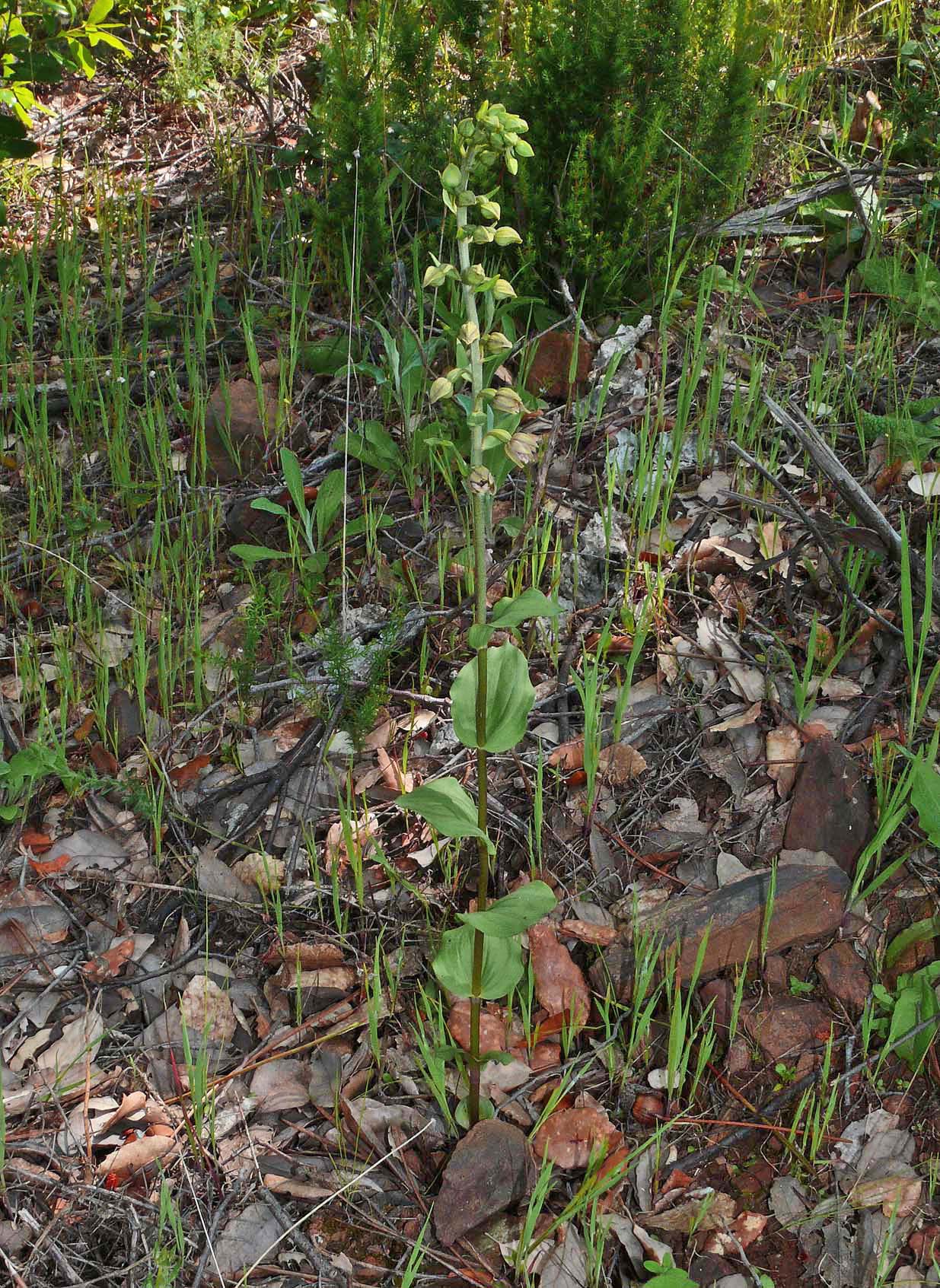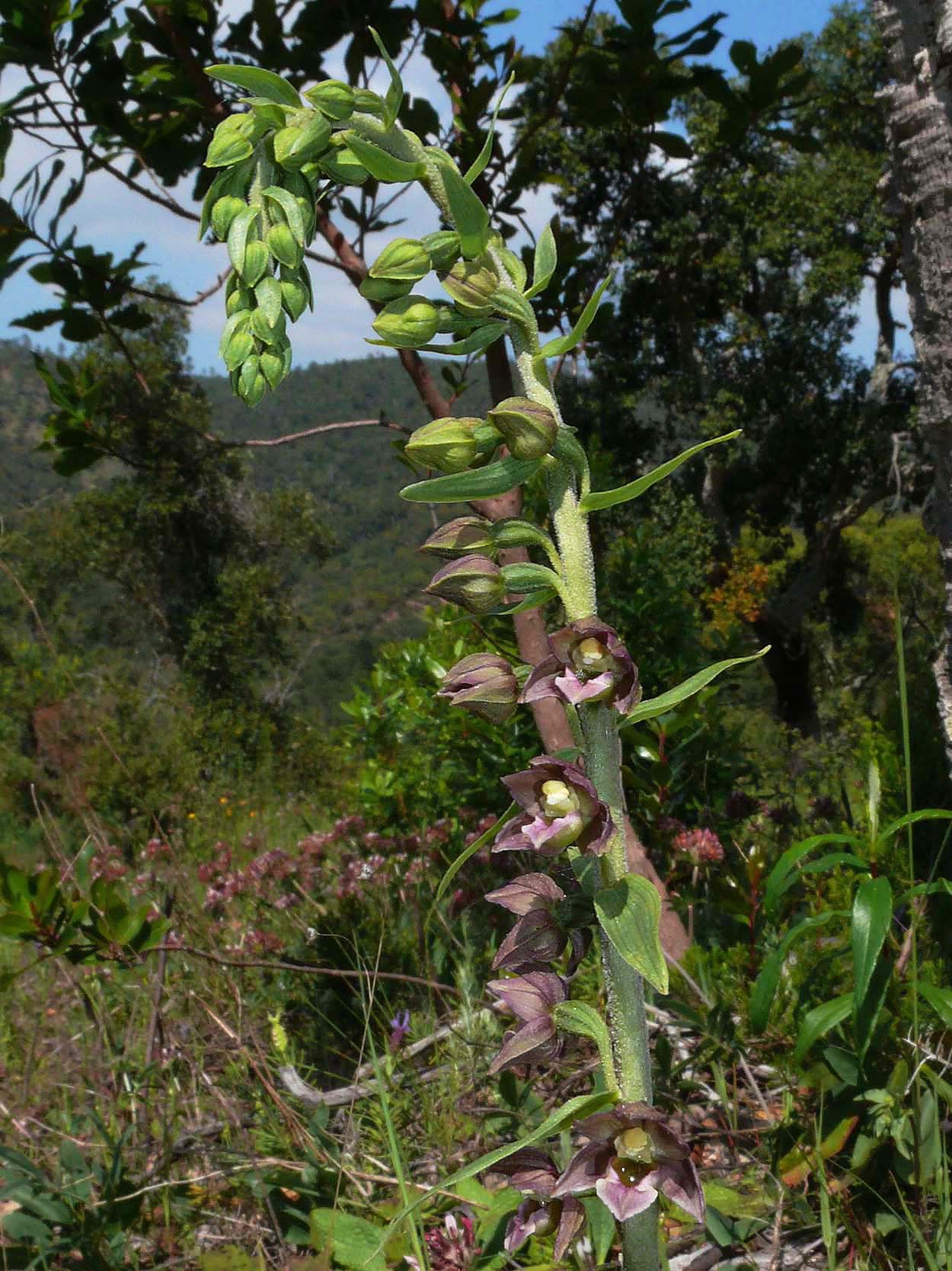E. lusitanica was first described by D. Tyteca from the Algarve, Portugal in 1988 and its name literally
means " from Portugal ". It is a member of the small, five species E. tremolsii group, all of which are
characterized by strongly hirsute stems and short, broad leaves which tend to be clustered towards the
base of the stem.
The status of this orchid as a full species is not widely accepted, with many authorities preferring the
view that it is simply a variety of E. tremolsii. It is an extremely variable orchid that can arise in a
range of colouration, size and appearance which can consequently closely imitate other species. Due
to the limited distribution of the species in southern Portugal and south west Spain this propensity for
imitation can really only create identification difficulties with one other species, E. tremolsii.
This does however occur and where the two species grow together on acidic substrates they can be very
difficult to separate. E. lusitanica is normally a less robust plant, growing no higher than 50cms, with
fewer leaves and paler colouration but the flowers themselves offer little by way of a means of species
separation. It is thought that this orchid along with the other members of the group, developed from a
common ancestor, perhaps E. helleborine or E. atrorubens as adaptations to an increasingly xeric
environment.
E. lusitanica is an orchid restricted to acid soils, where as with many other Epipactis species it prefers a
shady position in woodland clearings and edges. The photographs come from the Algarve and date from the
middle of April.
